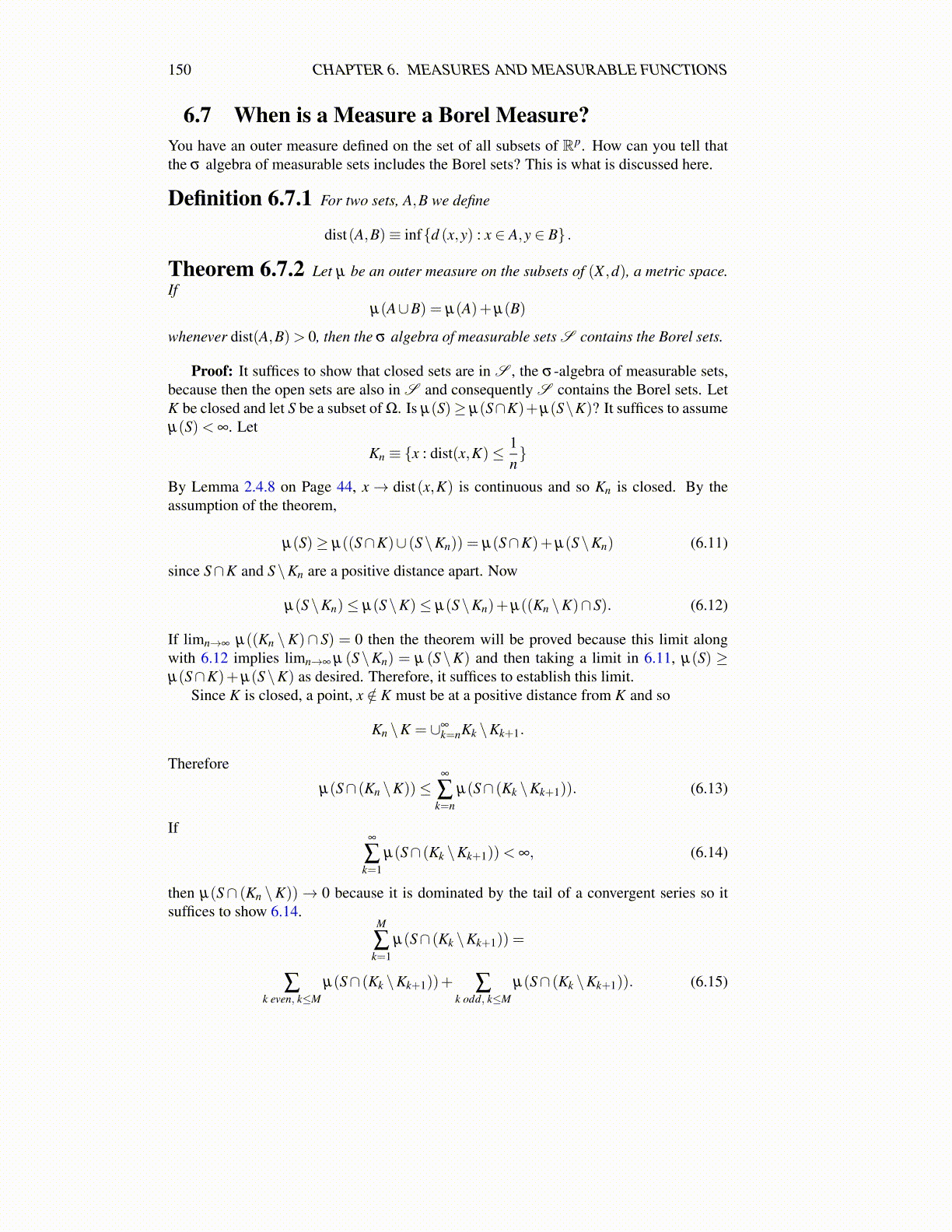
150 CHAPTER 6. MEASURES AND MEASURABLE FUNCTIONS
6.7 When is a Measure a Borel Measure?You have an outer measure defined on the set of all subsets of Rp. How can you tell thatthe σ algebra of measurable sets includes the Borel sets? This is what is discussed here.
Definition 6.7.1 For two sets, A,B we define
dist(A,B)≡ inf{d (x,y) : x ∈ A,y ∈ B} .
Theorem 6.7.2 Let µ be an outer measure on the subsets of (X ,d), a metric space.If
µ(A∪B) = µ(A)+µ(B)
whenever dist(A,B)> 0, then the σ algebra of measurable sets S contains the Borel sets.
Proof: It suffices to show that closed sets are in S , the σ -algebra of measurable sets,because then the open sets are also in S and consequently S contains the Borel sets. LetK be closed and let S be a subset of Ω. Is µ(S)≥ µ(S∩K)+µ(S\K)? It suffices to assumeµ(S)< ∞. Let
Kn ≡ {x : dist(x,K)≤ 1n}
By Lemma 2.4.8 on Page 44, x→ dist(x,K) is continuous and so Kn is closed. By theassumption of the theorem,
µ(S)≥ µ((S∩K)∪ (S\Kn)) = µ(S∩K)+µ(S\Kn) (6.11)
since S∩K and S\Kn are a positive distance apart. Now
µ(S\Kn)≤ µ(S\K)≤ µ(S\Kn)+µ((Kn \K)∩S). (6.12)
If limn→∞ µ((Kn \K)∩ S) = 0 then the theorem will be proved because this limit alongwith 6.12 implies limn→∞ µ (S\Kn) = µ (S\K) and then taking a limit in 6.11, µ(S) ≥µ(S∩K)+µ(S\K) as desired. Therefore, it suffices to establish this limit.
Since K is closed, a point, x /∈ K must be at a positive distance from K and so
Kn \K = ∪∞k=nKk \Kk+1.
Therefore
µ(S∩ (Kn \K))≤∞
∑k=n
µ(S∩ (Kk \Kk+1)). (6.13)
If∞
∑k=1
µ(S∩ (Kk \Kk+1))< ∞, (6.14)
then µ(S∩ (Kn \K))→ 0 because it is dominated by the tail of a convergent series so itsuffices to show 6.14.
M
∑k=1
µ(S∩ (Kk \Kk+1)) =
∑k even, k≤M
µ(S∩ (Kk \Kk+1))+ ∑k odd, k≤M
µ(S∩ (Kk \Kk+1)). (6.15)